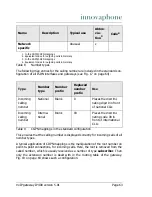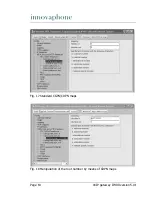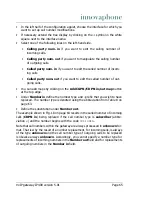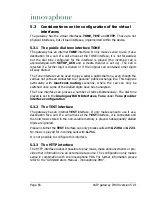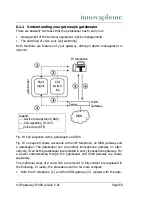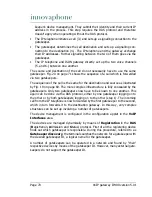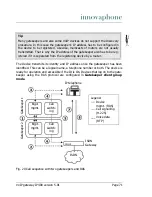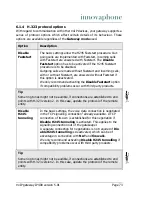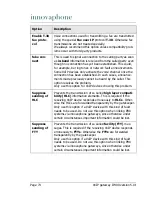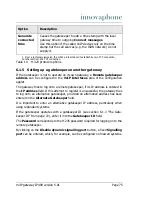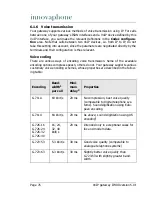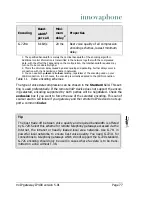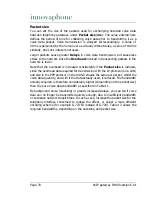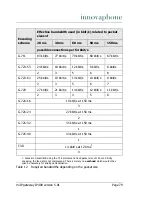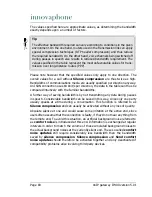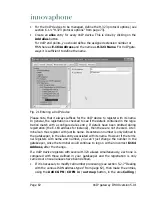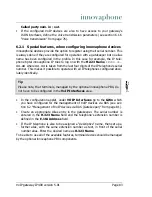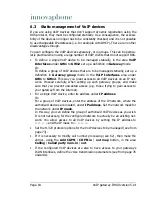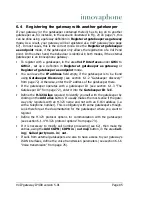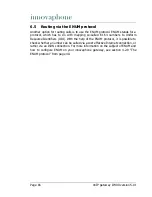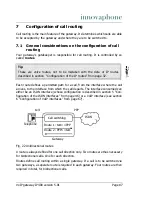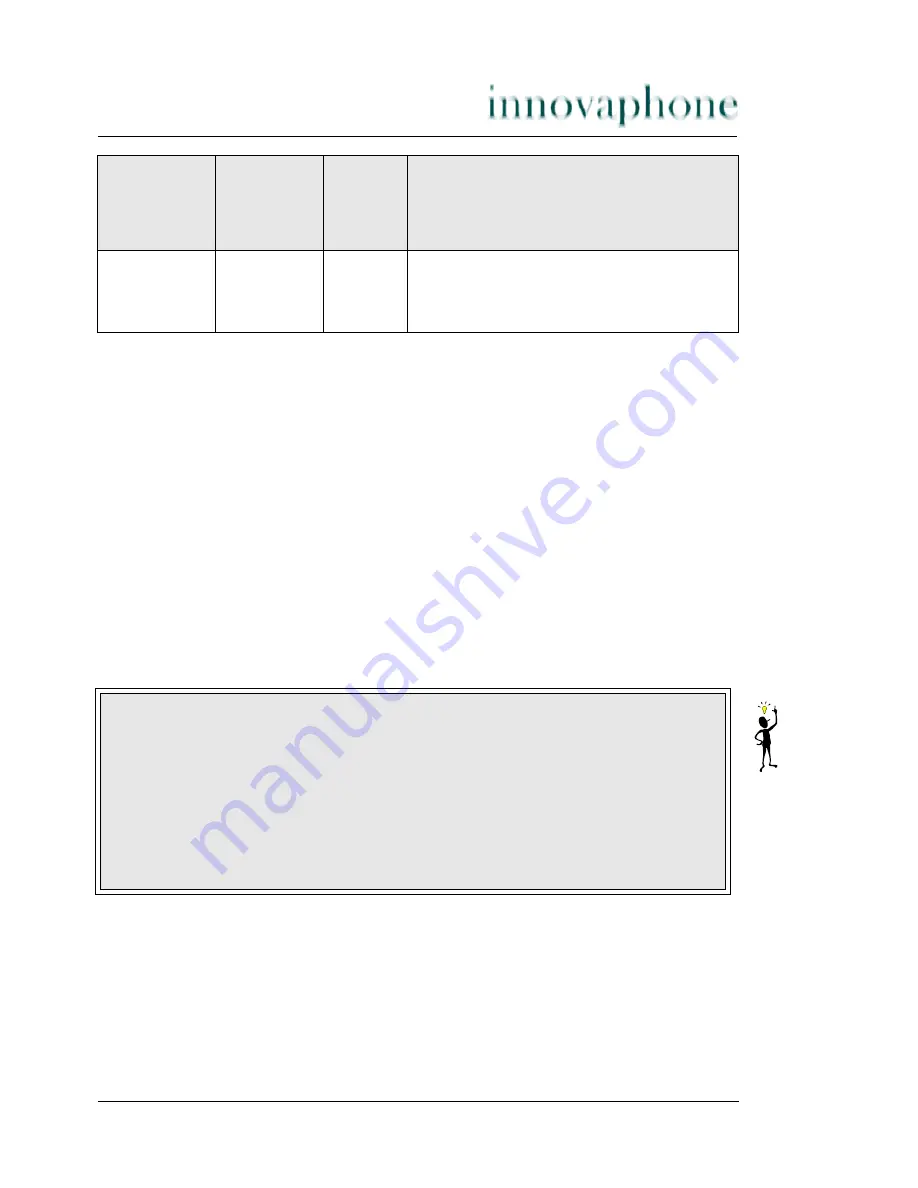
VoIP gateway IP400 version 5.01
Page 77
Table 11
Voice encoding schemes
The type of voice data compression can be chosen in the
Standard
field. This set-
ting is used preferentially. If the remote VoIP device does not support the encod-
ing selected, encoding supported by both parties will be negotiated. Check the
exclusive
box if you want to force the use of the selected encoding. This can of
course result in call failure if your gateway and the remote VoIP device do not sup-
port a common
Coder
.
Encoding
Band-
width
1
per call
Mini-
mum
delay
2
Properties
G.729A
8 kbit/s
20 ms
Best voice quality of all compression
encoding schemes, lowest minimum
delay.
1. The specified bandwidth is merely the nominal bandwidth of the encoding algorithm.
Additional control information is transmitted in the network together with the compressed
data, with the effect that, depending on the configuration, the total bandwidth required may
turn out to be considerably higher.
2. This is the minimum delay caused by data encoding and packeting. Further delays occur in
connection with the transmission of data in networks.
3. You can use both
µ-law
and
A-law
encoding, regardless of the encoding used on your
ISDN connection. In both cases, the encoding is correctly adapted to the ISDN connection.
Tip
The best trade-off between voice quality and required bandwidth is offered
by G.729. Select this scheme for remote telephony gateways accessed via the
Internet, the intranet or heavily loaded local area networks. Use G.711 in
powerful local networks, to ensure best voice quality. You need G.723.1 for
connections to telephony gateways which do not support the G.729 standard.
G.726 encoding should only be used in cases where fax data is to be trans-
mitted on a line without T.38.

